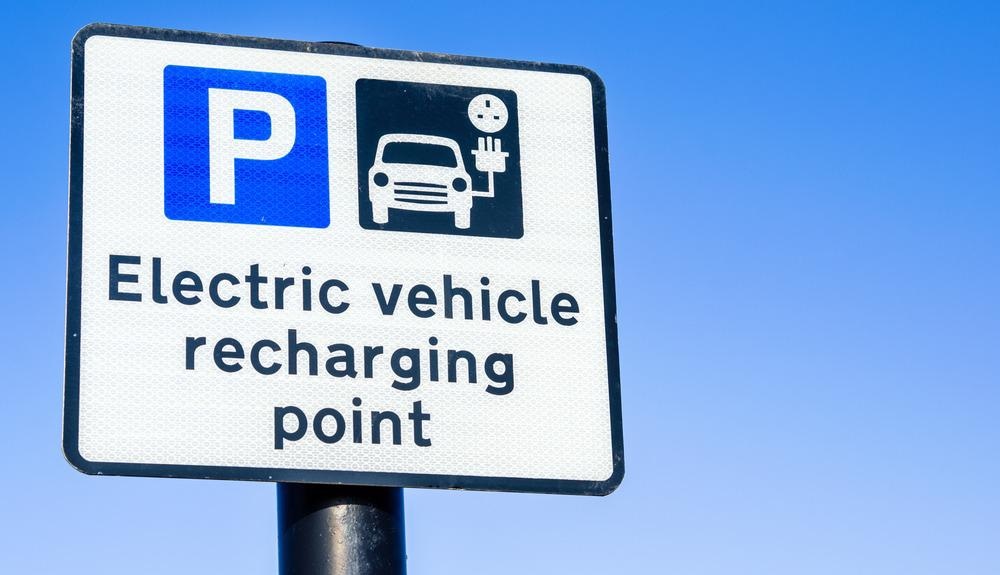UK-based Petalite recently launched a battery charging technology that will provide a more reliable and cost-effective solution than is currently used for electric vehicles. Petalite’s ground-breaking, patented “SDC” battery charging technology is also being used in the future of transportation – electric vertical take-off and landing vehicles (eVTOLs).

Image Credit: Albert Pego/Shutterstock.com
Introducing Petalite’s New Battery Charging Technology
Petalite’s SDC technology confronts current issues facing the electric vehicle charging market today, while also offering higher reliability and reduced long-term costs for its customers.
The charging system uses approximately half as many components as standard machinery today, and it also works independently from the electric vehicle it is charging. This is because it is a current source charging system. Petalite is the only electric vehicle charging company in the world to use this kind of system.
The company’s novel flyback topology enables it to achieve current source charging. This design allows an infinite amount of Petalite PowerCores (charging modules) to be stacked together, without needing any complex timing circuits or control systems to manage them.
Power factor correction (PFC) circuitry is not needed with this kind of charging system. Neither are high-voltage aluminum capacitors, enabling Petalite to make the system more reliable for less cost.
The system is so reliable that Petalite is committing to a lifespan of over 300,000 hours, three times longer than the leading electric vehicle charging systems available today. This is achieved by removing components with the shortest possible lifespan and using a single low side-driving MOSFET semiconductor.
Other technical benefits achieved with Petalite’s new charging technology include no power split between chargers, no short-term warranties, and minimal groundwork for installing the relatively lightweight and small-sized devices.
Electric Vehicle Charging Systems Are Out of Date
The technology and economics of the electric vehicle charging infrastructure installed so far were not designed for the connected, smart economy of the future.
This infrastructure is based on the full bridge design, a standard design for voltage sources. To work, full-bridge charging needs intricate timing circuits which often fail.
Full bridge systems can also only be stacked together in groups of up to ten (referred to as “modules”). This means that a full bridge module must be large and powerful, usually around 30 kW. If one module fails, then that 30 kW of power in that module is wasted.
Full bridge systems are more likely to trip for safety and shutdown if one component fails. For customers, this means waiting for an engineer to come and replace it, often at the customers’ own expense as charging systems in place today have relatively short warranty periods.
Full bridge is more complicated than it needs to be, says Petalite, requiring expensive, specialized components which makes it costly to maintain.
Full bridge topology has long been used for laptop and smartphone charging, but its introduction to high-power charging in the electric vehicle sector brings the challenges of numerous delicate parts to an industry that needs to ruggedize.
Full bridge is well-established, having proven itself as workable multi-layered charging infrastructure. But the costs of installing and maintaining it, and the fact that full bridge means that electric vehicle failures can cause errors in the charging unit, led Petalite to develop an alternative.
Petalite: Innovation in Charging
Petalite provides charging systems with its patented SDC current source technology to energy companies, charge point operators, fleet management businesses, and the consumer market.
As well as innovating in battery charging topology, the company is also spearheading new ways of doing business in the connected economy of the future. It offers charging as a service contracts, which removes risk from the customer and enables customers to use the latest technology, just as software as a service (SaaS) has in the digital technology industry.
By offering its charging systems on a regular service contract – rather than a product with an optional warranty and maintenance agreement – Petalite is backing its forecasts for the technology’s longevity and reduced maintenance costs.
The company has been working on its innovative SDC technology – and business plan – for several years. In April 2021, the firm finally announced that all technological milestones had been completed to bring the system to the market.
A company press release said:
“The design of our patent technology is now complete with the development of our 3kW SDC. We are now continuing the development of our technology and will be making rapid progress towards a 100kW rapid charging unit.”
Video Credit: Petalite - EV Charging Technology/YouTube.com
Next for Petalite? Flying Vehicles
Petalite’s innovative charging system is not only designed for electric vehicles. A partnership with UK-based technology contractor Vanti will see Petalite introduce 3-phase SDC charging to vertical takeoff and landing vehicles.
Funded by a UK government body, the two companies are collaborating on a “Retroflight-Alpha” project. This project is bringing Petalite’s efficient charging to flying electric transportation by developing physical and digital infrastructure to support future flight objectives for high-density urban environments.
Petalite is contributing 600 kW of charging technology, while Vanti is providing its smart building operating system (“Smart Core”). The two technologies together could make inaccessible landing sites for flying vehicles viable in the future with more efficient charging processes.
References and Further Reading
Covill, R. (2021) Electric vehicle charging specialist unveils latest technology. [Online] TheBusinessDesk. Available at: https://www.thebusinessdesk.com/westmidlands/news/2054988-electric-vehicle-charging-specialist-unveils-latest-technology
Garrington, J. (2021) Vanti and Petalite receive funding from UK Research and Innovation. Vanti. Available at: https://vanti.co.uk/news/vanti-and-petalite-receive-funding/
Disclaimer: The views expressed here are those of the author expressed in their private capacity and do not necessarily represent the views of AZoM.com Limited T/A AZoNetwork the owner and operator of this website. This disclaimer forms part of the Terms and conditions of use of this website.